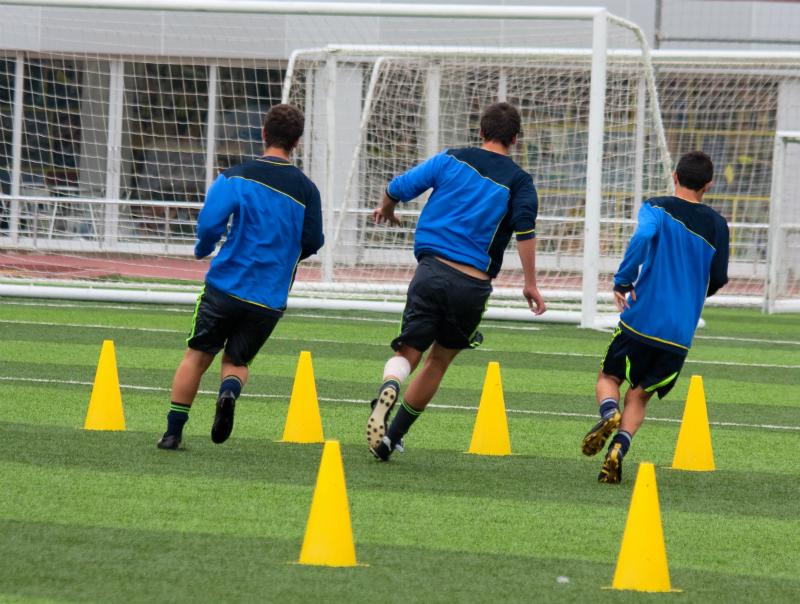What exactly is a nap?
Well according to Wikipedia, a nap is a short period of sleep, typically taken during daylight hours as an adjunct to the usual nocturnal sleep period. Naps are most often taken as a response to drowsiness during waking hours. Naps for so long have almost been considered as a ‘lazy’ thing to do, however their is plenty of research to suggest that someone who regularly takes a nap will reap the benefits including a reduction in risk of cardiovascular disease, diabetes, stroke and heart attack. In one study of 23,681 Greek men over six years, the participants who napped three times per week had a 37% lower risk of dying from heart disease. Not to mention a host of other positive outcomes that might occur from regular napping.
Naps and the athlete
While there is considerable data available related to the amount of sleep obtained by adults in the general population, surprisingly up until recently there has been few published data related to the amount of sleep obtained by elite athletes. This appears to be a considerable oversight given that sleep is generally recognised as being an essential component of preparation for, and recovery from high-intensity training.
Enter Nick Littlehales, Nick is one of the world’s pioneering sports sleep coaches. Based in Nottingham, England, Nick has consulted to the likes of British Cycling, two-time Tour de France winning Team Sky, power house soccer clubs Manchester United and Real Madrid as well as in Olympic rowing, sailing, track and field and boxing teams. It’s Littlehales work with Real Madrid, and in particular with their £85 million pound signing Gareth Bale, that has brought sleep and sporting performance fully into the limelight. A recent report from the BBC titled ‘How Gareth Bale and Real Madrid sleep their way to the top’ details the ways in which a lack of sleep can impact an elite level athlete, as sleep is a key part of recovery.
 Real Madrid’s relentless pursuit of marginal gains like many clubs dining at the top table of European football turns to technology, purpose-built facilities and, believe it or not, sleep experts to recharge their multi-million pound assets and gain that all competitive advantage. Littlehales inspected the sleeping arrangements at the club’s training complex to set up what he termed the ideal ‘sleep environment’ – this includes the room temperature lighting, air quality, duvet-type and mattresses.
Real Madrid’s relentless pursuit of marginal gains like many clubs dining at the top table of European football turns to technology, purpose-built facilities and, believe it or not, sleep experts to recharge their multi-million pound assets and gain that all competitive advantage. Littlehales inspected the sleeping arrangements at the club’s training complex to set up what he termed the ideal ‘sleep environment’ – this includes the room temperature lighting, air quality, duvet-type and mattresses.
In working with Gareth Bale, Nick quickly got to work on Gareth’s sleeping habits and making the necessary adjustments to his daily routine.
“He identifies with being an owl – he hates the mornings. He’s also got a young child, which can have an effect on sleep” Nick Littlehales
Littlehales worked with Bale on ways in which he could maximize his sleep environment and his advice on that included regular naps. Bale’s biological clock – or circadian rhythm to give it its proper title – means he naturally falls asleep and wakes up at later times, leaving his energy levels at their lowest early in the morning, before peaking in the afternoon. In recommending naps it appeared to pay dividends as Bale has scored late goals in both the Copa del Rey and Champions League finals that season.
Further research of naps and sporting performance concurs with Littlehales. A recent investigation into the effects of a lunchtime nap on sprint performance following partial sleep deprivation (4 h of sleep) discovered that following a 30-min nap, 20 m sprint performance was increased, alertness increased, and sleepiness decreased when compared with the no-nap trial. Sleep supplementation (in the form of napping) has also been shown to have a positive influence on cognitive tasks following a night of sleep deprivation (2 hours). Naps can significantly reduce sleepiness and be beneficial when learning skills, strategy or tactics. Napping could also be beneficial for athletes who have to routinely wake early for training, competition or travel and those experiencing sleep deprivation.
So what effect does sleep, and in particular naps, have on your heart rate variability (HRV) measurement? Firstly, there is no question that quality sleep is one of the, if not the best and cheapest sports enhancement aid by far. If you read our Tuesday Tip piece last week you would have seen that in the 20-30 minutes after falling asleep, which includes a period of deep as well as light sleep, results in a raised HRV which is indeed higher and even more stable than when awake.
A recent study by Arnin and Wonsawat (2014) found that a short afternoon catnap of 20 minutes yields mostly stage 2 sleep, which enhances alertness and concentration, elevates mood, and sharpens motor skills. This would suggest a better overall sporting performance could be achieved by napping. Additionally the research suggested to achieve increase alertness on waking from a nap, drinking a cup of coffee before you nap. Caffeine requires 20 or 30 minutes to take effect, so it will kick in just as you’re waking. Naps of up to 45 minutes may also include rapid eye movement (REM) sleep, which enhances creative thinking and boosts sensory processing.
Summary
So to sum it up, whether you’re at the top of your game or involved in a sport for the fun of it, getting the most out of your sleep by boosting with a short nap could be a great way to improve your performance. Sleep will help you on the road to good fitness, good eating, and good health. What better excuse do you need to catch a nap this afternoon?
